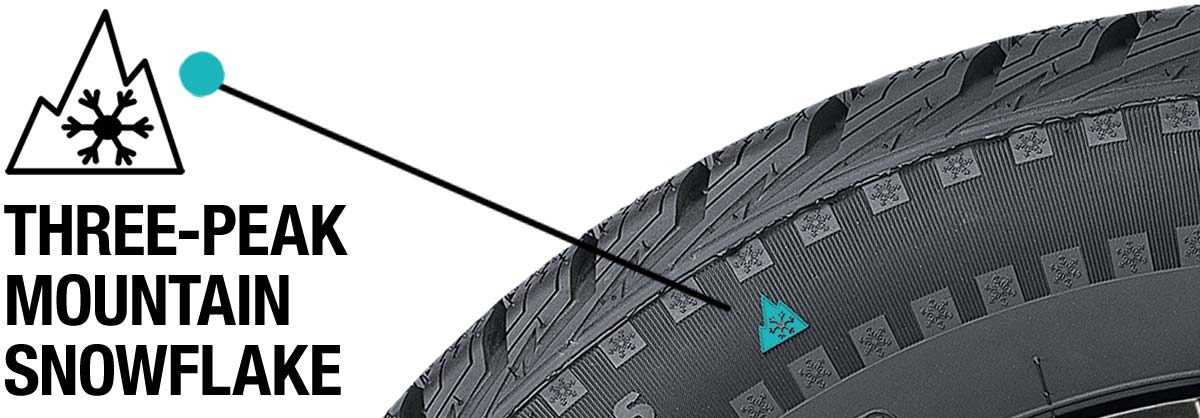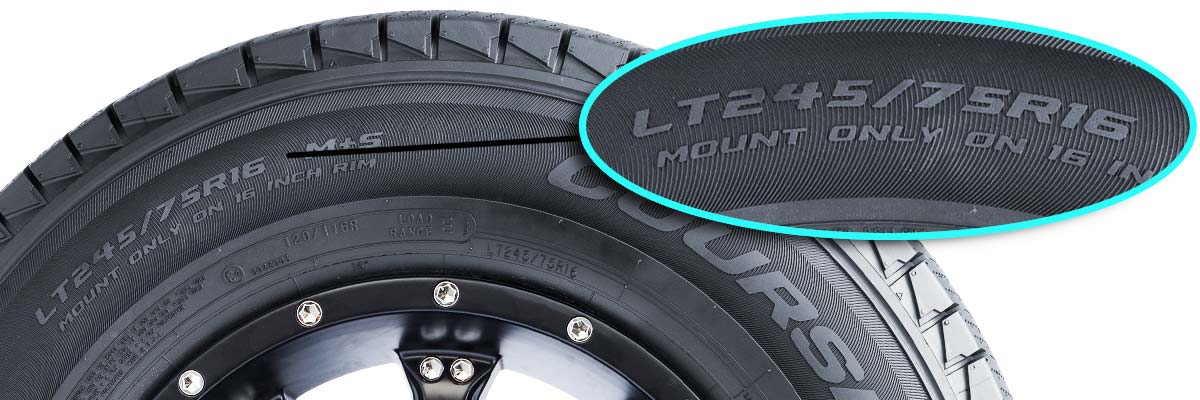How to: Choose Snow Tires
Content Provided by Les Schwab Tire Center.
Parker | Castle Rock
View original article here.

Do I need to buy winter tires or can I just get snow chains?
What the heck is siping?
When do I have to have studded tires and when will studless do?
If you’re wondering how to pick the right tires for winter, or whether you need them at all, here are answers to the eight most common questions about winter tires.
(A lot of people still call tires used in the cold months “snow tires,” but it’s more accurate to call them “winter tires.” For purposes of this article, we use both terms to mean tires designed for winter driving.)
1. “Do I need snow tires?”
Winter tires are important for safe driving if you live somewhere that gets snow, ice, sleet or freezing rain and temperatures of 40 degrees or colder. They’re also the right option if you routinely make trips through snow zones or the mountains during the cold months.
2. “If my tires are marked ‘M+S’ on the sidewall am I good to drive on snow?”
Some all-season tires are rated M+S, standing for mud and snow. This means the tread design delivers better traction in wet conditions than non-M+S tires.
But it doesn’t mean they’re adequate for winter driving. In slick conditions, they don’t deliver the traction, control and short stopping distance that you get from a snow tire.
If you want safer driving on packed snow or ice, look for tires made with the right compound and branded with the Mountain Snowflake. This means they’ve actually been tested and certified to perform in winter conditions.

3. “I have all-season tires, so I don’t need snow tires. Right?”
Wrong. Don’t believe it? See this driving comparison between all-season and snow tires.
If you’re driving on snowy or icy roads, only winter tires will give you good stopping ability and secure handling. This is because they’re built very differently. How?
Different compound. Summer and all-season tires are made with a stiffer rubber compound. This helps the tire retain its shape when it’s rolling on hot pavement. Winter tires are made with hydrophilic (that’s “water-loving”) rubber which stays softer and more pliable in winter weather. This more flexible rubber is one reason you get more traction on snow and ice.Another reason is tread design. Winter tires have a higher “void-to-lug” ratio, meaning there are larger grooves between the blocks of tread (the lugs). The tread blocks also have irregular, sharp edges.

When a tire with wide grooves and biting edges travels over packed snow, it cuts through and scoops some of the snow into the voids on the tire surface, allowing the tread to stay in closer contact with the road. Then the velocity of the tire ejects this snow from the grooves. This is how winter tires provide more aggressive traction than all-season tires.
4. “Should I get my snow tires siped?”
Most snow tires are already siped, with small patterned slits on the lugs that create extra edges for better road grip. Additional safety siping can be done for a fee on new or used tires. If you’re regularly traveling on slick roads, the added traction from custom siping is a good way to improve starting, stopping and rolling traction.
5. “Is it okay to buy used winter tires?”
Before you jump on that set of “lightly used” winter tires on Craigslist, do three quick checks. First, verify they’re the right size. You can look in your vehicle owner’s manual or right on your existing tires’ sidewall close to the rim for the series of numbers. (Here’s a primer on what they all mean.) If you’re not sure the tires you’re considering are the correct size, call a tire dealer and make sure.

Second, measure the tread depth by using a tire tread depth gauge. You can pick one up at any auto parts store for under five bucks. Or have a tire store tech do it; it should be free. Take measurements in multiple places in the grooves on each tire. Here’s how.
A new tire typically has 11/32nds of an inch in tread depth. A rule of thumb is that if there are 6/32nds of an inch or less in tread remaining on a winter tire, it’s about to lose a good deal of snow performance. So think carefully about whether you’re going to get what you’re paying for.
Third, be sure there’s not a problem with uneven wear. Did your tread gauge measurements show any tread depth difference between the four tires? It’s really common for tires to wear differently over time. If the disparity between any two tires is more than 3/32nds of an inch, pass on those used tires. Driving with mismatched tires or putting the wrong size on your vehicle will NOT save you money in the long run. You’re risking big repair bills for your transmission.
It’s also a bad idea to put winter tires on only the front or back. This creates a big difference in traction between your axles. And this will mean less steering control, not more.
6. “Can I just buy chains instead of snow tires?”
Tire chains can be important — and are sometimes required — for traction when you’re traveling in the mountains or on icy roads. But they’re not made for driving at highway speed or on bare pavement. You risk damaging your chains if you try this.
Don’t think of chains as a substitute for winter tires but as an option you need to have ready when you’re driving on snow.
Depending on the conditions and your state’s rules, traction controls in snowy areas will range from requiring only the minimum — like M+S tires on the drive axle — up to chains on all tires, including all-wheel and four-wheel drive vehicles. Here are California’s chain controls, for example.
7. “Do I need studded snow tires or studless?”
The tire dealer will consider your driving habits, where you’re traveling and typical winter conditions in your area when recommending what you need.
Studless snow tires work well on slush and packed snow. They get traction through wide, deep grooves and lots of irregular surfaces with sharp edges. This allows the rubber to cut through snow and grip the road.
Studded tires provide the best traction you can get, even when you’re encountering ice. Studs are lightweight pins that are arrayed across the tread. Like claws on a snowshoe, they dig into slick surfaces. Note: Extra tread depth is needed to accommodate studs, so studded tire size options are limited. Also, the times of year when studded tires are allowed on the road vary by state. Here’s a guide to studded tire regulations.
8. “Should I buy winter tires with rims?”
It’s a question of time and money. Here’s a way to decide:
- Assume you’ll have your snow tires for five years.
- Total up the cost your tire dealer will charge for swapping out tires twice a year (ten times) if they’re not on rims. (Les Schwab will swap out tires purchased at our stores at no charge if they’re mounted on separate wheels.)
- Compare that figure to the price of the rims to see if there are savings.
- Factor in a bit more waiting time, since it takes the shop longer to unmount and remount the tires on the rims each time.
- Weigh whether the tradeoff in any money saved is worth the extra waiting room time.
Also consider the extra wear and tear on your tires that comes with unmounting and remounting tires on only one set of wheels. Especially with low-profile tires, it’s not uncommon for an inexperienced tire tech to damage the inside edge of a tire near the beads, the places where the tire gets pried off and pushed back on.
If you’re leaning toward separate wheels for your winter tires, here are some tips on selecting the best wheel finishes for winter conditions.
The Bottom Line on Picking Winter Tires
Some all-season tires are marketed as working equally well in summer and winter. That may be true in dry, mild climates where the seasons don’t vary much. But you’ll only get confident traction, braking and control on snow and ice with a winter tire. If you live in a place with winter weather, you’ll need tires marked with the Three-Peak Mountain Snowflake for safest handling. Because not all tires with a mountain snowflake have a winter compound, ask your tire dealer what you really need.
Want more tips on winter road safety? See 19 Winter Driving Resources You Can’t Do Without.

